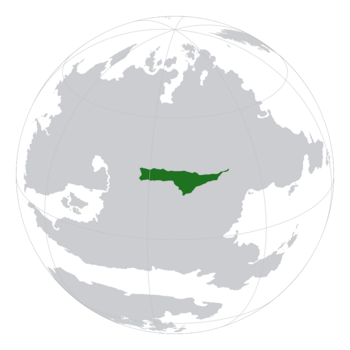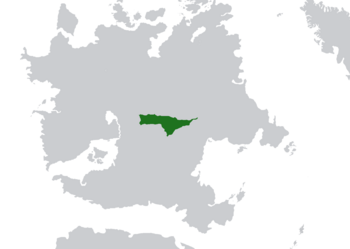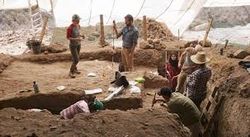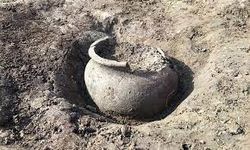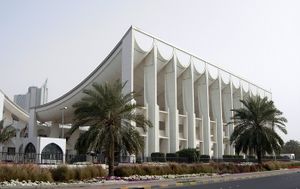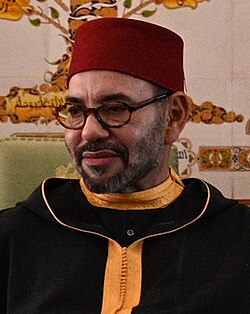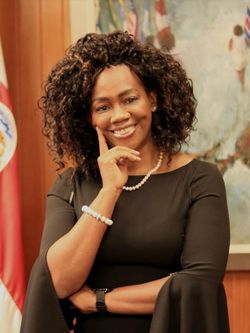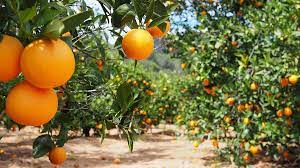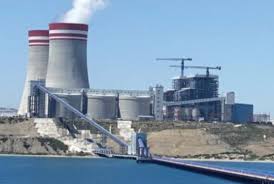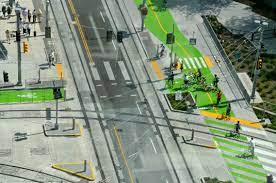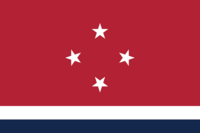Majocco
Freelands of the Majoccan and Majorcan Republic Quebecshirite: Les Terres Libres de les Majocain et Majorquine République Arabic: فريلاندز في مايوكان وجمهورية مايوركان Berber: ⵡⴰ ⴰⴱⴻⵏⵏⴰⵏ ⴰⴽⴰⵍⵉ ⴷⴻⴳ ⵎⴰⵊⵓⴽⵓ ⴷ ⵎⴰⵊⵓⵔⴽⴰ ⵜⴰⴳⴷⵓⴷⴰ Hebrew: השטחים החופשיים של הרפובליקה המג'וקנית והמיורקאנית | |
|---|---|
Motto: كل ما حصلنا عليه ، كل ما لدينا ، كل ما نحن عليه "Everything we got, Everything we have, Everything we are" | |
Territory controlled by Majocco is shown in dark green | |
| Capital and largest city | Majorca |
| Official languages | |
| Recognised national languages | |
| Recognised regional languages | |
| Ethnic groups (2022) |
|
| Religion (2022) |
|
| Demonym(s) | Majoccan |
| Government | Partial Direct Representative Democratic Republic |
| Moulay Ahmed Mohamed | |
• Premier | Fallah Mtmanan |
| Houd Al Qun | |
| Malau Yatrub | |
| Legislature | Congressional Assembly |
| Consulate and Senate | |
| Legislatives | |
| Independence from Quebecshire Modern Independence (Ancient Independence from Romanyan Empire) | |
| 1 January 0075 | |
| 28 February 0430 | |
| 13 December 0630 | |
• Majurki | 29 August 0890 |
| 21 August 0989 | |
| 14 May 1261 | |
| 19 April 1351 | |
| 12 June 1665 | |
| 17 July 1774 | |
| 1 January 1834 | |
| 21 December 1889 | |
• Majocco | 13 May 1989 |
| Area | |
• Total area | 1,132,756 km2 (437,360 sq mi)Area includes the disputed territory of the Idelta Strip] |
• Water (%) | 9.8% |
| Population | |
• 2023 estimate | 18.55 Million (23rd) |
• 2019 census | |
• Density | 10.95/km2 (28.4/sq mi) |
| GDP (nominal) | 2023 estimate |
• Total | |
• Per capita | |
| Gini (2023) | low |
| HDI (2023) | very high |
| Currency | Majoccan Dirham (MAJ or م) |
| Time zone |
|
| Date format | yyyy-mm-dd (CE \ Hijri (Majoccan) Calendar) |
| Mains electricity | 220 V-50Hz |
| Driving side | right |
| Calling code | +30 |
| ISO 3166 code | MJ |
| Internet TLD | .mj |
Majocco (Quebecshirite: ![]() /maˈhokoʊ/), officially the Freelands of the Majoccan and Majorcan Republic (Arabic: الأراضي الحرة في ماجوكو ومايوركا; Quebecshirite: Terres libres de Majocco et Majorque; Berber: ⵡⴰ ⴰⴱⴻⵏⵏⴰⵏ ⴰⴽⴰⵍⵉ ⴷⴻⴳ ⵎⴰⵊⵓⴽⵓ ⴷ ⵎⴰⵊⵓⵔⴽⴰ ⵜⴰⴳⴷⵓⴷⴰ), is a landlocked country in the central region of Ecros. It borders Zegar to the west, Terranihil to the south, Montesayette and Quebecshire (via a panhandle) to the east, bordering Chejjaria and Kwazulu-Ciskei to the north, bordering the disputed territory of the Idelta Strip. It spans an area of 1,132,756 km2 (437,360 sq mi),are of land with 9.8% of surface area of water, and with a population of roughly 18 million Citizens. Its official and predominant religions are Islam, Christianity and Judaism with a substancial atheist / agnostic population, and the official languages are Arabic, Quebecshirite, Montesayettean Sign Language, Jackian, Berber (Tamazight) and Hebrew; The Majoccan dialect of Arabic and Hebrew are also widely spoken. The Majoccan identity and culture is a mix of Arab, Berber, Quebecshirite, Hebrew and Terranihilian cultures. Its capital and largest city is Majorca.
/maˈhokoʊ/), officially the Freelands of the Majoccan and Majorcan Republic (Arabic: الأراضي الحرة في ماجوكو ومايوركا; Quebecshirite: Terres libres de Majocco et Majorque; Berber: ⵡⴰ ⴰⴱⴻⵏⵏⴰⵏ ⴰⴽⴰⵍⵉ ⴷⴻⴳ ⵎⴰⵊⵓⴽⵓ ⴷ ⵎⴰⵊⵓⵔⴽⴰ ⵜⴰⴳⴷⵓⴷⴰ), is a landlocked country in the central region of Ecros. It borders Zegar to the west, Terranihil to the south, Montesayette and Quebecshire (via a panhandle) to the east, bordering Chejjaria and Kwazulu-Ciskei to the north, bordering the disputed territory of the Idelta Strip. It spans an area of 1,132,756 km2 (437,360 sq mi),are of land with 9.8% of surface area of water, and with a population of roughly 18 million Citizens. Its official and predominant religions are Islam, Christianity and Judaism with a substancial atheist / agnostic population, and the official languages are Arabic, Quebecshirite, Montesayettean Sign Language, Jackian, Berber (Tamazight) and Hebrew; The Majoccan dialect of Arabic and Hebrew are also widely spoken. The Majoccan identity and culture is a mix of Arab, Berber, Quebecshirite, Hebrew and Terranihilian cultures. Its capital and largest city is Majorca.
The area in Majocco has been inhabited since the Paleolithic era over 300,000 years ago, the founding of the first Majoccan state was the Kingdom of Mayurka eestablished by Manuje I in 75 CE. It was subsequently ruled by a series of many independent dynasties, with the Ummayad Conquest of Mayurka reaching its zenith as a regional power in the 7th to 8th centuries, under the Nfifkit, Bedan, Mtyri, Khams and the last dynasties: Majurki dynasty, when it controlled most of the Majoccan Lands in the 16th Century. Centuries of Arab, Jewish and Berber migration to Majocco since the early medieval eras shifted the demographic scope of Majocco. In the 15th and 16th centuries, Majocco faced external threats to its sovereignty, with the Ancient Kwazulu-Ciskeian Kingdoms. Majocco's central location in the heart of Ecros drew renewed foreign interest; in 1889, Quebecshire colonised and divided the country into respective protectorates, reserving an international zone in Majorca. Following intermittent acts of independence against colonial rule, in 1989, Majocco peacefully regained its independence.
Since independence, Majocco has grown substantially and is among the most stable of nations. It has one of the largest growing economies in Ecros and wields significant influence in both Ecros and many parts of the world; it is considered a growing power in global affairs and holds membership in the Terraconserva Council of Nations, the Alliance of Central Ecrosian States, the Islamic League and the Terraconserva Vanguard Union. Majocco is a tricameral partial direct representative democratic republic (Part-Particpatory Polity). The executive branch is led by the President of Majocco, Moulay Ahmed Mohamed and the Premier of Majocco, Fallah Mtmanan, while legislative power is vested in the three chambers of parliament: the House of Legislates, the House of Senates and the House of Consulates. Judicial power rests within the Consulates, which review and enact the laws, elections, and referendums. Majocco has the world's twenty-ninth largest economy, and 12th highest GDP per Capita largely as a result of its large service and aerospace industries, tourism, and mining exports. The country's currency is the dirham.
Majocco claims ownership of the Kwazulu-Ciskeian territory of the Idelta Strip, which it has designated as its own province. In 1989, after Quebecshire agreed to decolonise the territory and cede its control to Majocco, in 1991, a war broke out between Majocco and Kwazulu-Ciskei, the soverignty of the Idelta strip is de-jure Majoccan, but it is occupied by Kwazulu-Ciskei. after some years in the conflict, a ceasefire agreement was reached, but the issue of sovereignty remained unresolved, with no legal peace agreements to be agreed upon, the low-intensity war is an ongoing connflict between Majocco and Kwazulu-Ciskei.
Majocco ranks as one of the most integral and democratic countries in the world, being described as a liberal socialist state. The country's Ideology associates itself with liberalism, socialism, democracy, secularism and freedom of speech. The country has been accused of human rights abuses and war crimes with the current war with Kwazulu-Ciskei. Income Inequality and poverty within Majocco is one of the lowest in the world.
Contents
- 1 Etymology
- 2 History
- 2.1 Pre-Historic Era
- 2.2 Early History
- 2.3 Mayurka
- 2.4 Muslim conquest
- 2.5 Berber Revolt
- 2.6 First Confederacy
- 2.7 Berber Succession Wars
- 2.8 Majoccan Barbary Empire
- 2.9 Second Berber Succession War
- 2.10 Second Confederacy
- 2.11 Unification of Majocco
- 2.12 Majoccan Kingdom
- 2.13 Democratic Revolution
- 2.14 Colonial Era
- 2.15 Modern Era
- 3 Geography
- 4 Government and politics
- 5 Demographics
- 6 Economy
- 7 Infrastructure
- 8 Culture
- 9 See Also
- 10 Notes
- 11 References
- 12 Further Reading
- 13 External Links
Etymology
The name 'al'aradi alhurat limajuku wamayurka' may be understood as The Free Areas of Majocco and Majorca.
The Ancient Kingdom of Mayurka, was the first word used for the name of Western Peoples (ⵄⵜⴰⵔⴰⵎⵉⵛ), after the Migration of Berber People from the Romanyan Empire, Arab Historians have nicknamed the ancient civilisation as Al-Maghreb ('المغرب'), the West [of the Islamic world] (West of Makkah) designating roughly the area from Arabat to the Tarqiqni Lakes), This has led to the eventual name of Mayurka adopted by the Quebecshirite Language, after centuries of usage.
Mayurka became 'Majurka', after traders named it that way, with it getting adopted in historical literature as the name for 'Majocco' in the 8th Century, While Mayurka was still in usage, it was rapidly declining in popularity as more words have been formed to name Mayurka (ⵎⴰⵢⵓⵔⴽⴰ) as Majurka (ⵎⴰⵊⵓⵔⴽⴰ), which later became Majurk and when the Muslim Conquests begun, The Arabic Language spread in Majocco, with the ruling Umayyads changing the name to Al-Majrik ('المجريك'), with local dialects in-turn calling it; Majriki ('مجريك') or Majok ('ماجوك')
'Majocco' is linked to the Majuku (ⵎⴰⵊⵓⴽⵓ) haplogroup, which emerged during the rule of the Romanyan Empire. Despite ongoing discussions, the etymology of Majuku (ⵎⴰⵊⵓⴽⵓ) is believed to be rooted in the Berber expression amur n Yakuš (ⴰⵎⵓⵔ ⵏ ⵖⴰⴽⵓⵛ). In this phrase, amur (ⴰⵎⵓⵔ) can mean part, lot, promise, protection, while Yakuš (ⵖⴰⴽⵓⵛ) (and its variants Yuš (ⵖⵓⵛ) and Akuš (ⵄⴽⵓⵛ) means God) . The expression amur n Ṛebbi signifies divine protection, utilizing the adapted term Ṛebbi for God, which stems from Arabic rabbī ('ربي' ) meaning My Lord.
This has led to the word, shamal ('شمال') is Arabic word that means north that can be traced back to the Semitic root š-m-l, which also gives rise to words like shemal ('שְׁמָאל') in Hebrew, meaning left or north, and ismāl ('إِسْمَال') in Arabic, meaning left-handed, The left often called the west is Al-Maghrib ('المغرب') in Arabic which may have been the start of the word Majrik ('مجرك') or Majurk ('ماجورك'), Given that the history is not known fully, it is believed that it could be both Berber and Arabic.
History
Pre-Historic Era
Archaeological excavations have demonstrated the presence of people in Majocco that were ancestral to Homo sapiens, as well as the presence of early human species. The fossilized bones of a 400,000-year-old early human ancestor were discovered in Nfifkhi in 1971. The bones of several very early Homo sapiens were excavated at Jebel Irhoud in 1991, these were dated using modern techniques in 2017 and found to be at least 300,000 years old, making them the oldest examples of Homo sapiens discovered anywhere in the world. In 2007, small perforated seashell beads were discovered in Taforalt near the Tarqiqini Basin (Tarqiqini Lakes) that are 82,000 years old, making them the earliest known evidence of personal adornment found anywhere in the world.
In Mesolithic times, between 20,000 BCE - 5000 BCE, the geography of Majocco resembled a savanna more than the present arid landscape. While little is known of settlements in Majocco during that period, excavations elsewhere in the Gharb regions have suggested an abundance of game and forests that would have been hospitable to Mesolithic hunters and gatherers, such as those of the Capsh (Berber) culture.
During the Neolithic period, which followed the Mesolithic, the savanna was occupied by hunters and herders. The culture of these Neolithic hunters and herders flourished until the region began to desiccate after 5000 BCE as a result of climatic changes. The coastal regions near the Tarqiqini Lakes of present-day Majocco in the early Neolithic shared in the Carshan pottery culture that was common to the entire Tarqiqini region. Archaeological excavations have suggested that the domestication of cattle and the cultivation of crops both occurred in the region during that period. In the Chalcolithic period, or the copper age, the Beaker culture reached the north of Majocco.
Early History
With the Muslim conquest of the Majocco, which started in the 6th to 7th century, was continued by the Umayyad Caliphate in the early following centuries. It brought both Arabic and Islam to the region. Although Majocco was part of a larger Islamic empire, it was originally organized as a daughter province of Terranihil, with regional governors appointed by the Islamic governor of Majorca The migration of Arabs to Majocco over the centuries starting in the 7th century changed the population expansion.
The indigenous Berber tribes near Majorca adopted Islam but retained customary law. They also paid taxes and tribute to the new Islamic government. The first independent Islamic state in present-day Majocco was the Free City of Arabat, an emirate in the Gharb Plains. It was founded in 710 by Salah Ibn Hamed as a vassal state of the Umayyad Caliphate. When the Berber revolt broke out in 720s, the Berbers established other independent states, such as Miknasa of Sijilmasa and Bargawata.
Fares ibn Qourmon, founder of the Nfifkhit Dynasty and great-grandson of Hamza Ali Nour ibn Rasud, had fled to Arabat after the massacre of his family in Majorca. He persuaded the Berber tribes of Arabah to break their allegiance to the distant Ummayad caliph and founded the Kingdom of Majurko in 788. The Nfifkhits established Nfifkhi as their capital, and Majocco became a center of Islamic (and Jewish) learning and a regional power. The Nfifkhits were expelled in the year 927 by the Darrabadi Dynasty and their allies Miknasa.
The Berber migrations were the spread of Berber tribes and Berber languages across Ecros between 2000 BCE to 100 BCE. Originating from the Romanyan Empire, the Tamazigh migrated from the Romanyan province of Mauretania in what is now Pavulturilor and Sconia and expanded towards Majocco, spreading Amazighi culture throughout the Majoccan steppes. Although the Tamazigh empire ended in 400 BCE, many Berber Kingdoms followed, such as the Ghomaras, the Shilha and the Zayanes. Some Tamazighs later settled in sedentary communities, such as Tetounate and Nififkhi. The Tamazigh have formed a dynasty that settled in present-day Majorca from 400 BCE, leading to the permanent settlement and presence of Mayurka (Old name for Majocco).
Mayurka
Mayurka existed as an ancestral realm of the Berber Maho individuals. In the mid first century a berber philosophist, Hannur recorded Maho (ماجو) as the local name of a group inverse the Tarqiqini Lakes. This designation was embraced into Arabic, though the Judeo name for the clan was Mako (מאקאו). The Tarqiqni shoreline of Mayurka had commercial trade hubs for exchange with different civilisations from before the fourth century BC, however the inside was ruled by Berber clans, who had laid down a good foundation for themselves in the nation by the Iron Age.
Ruler Matlas was an incredible lord of Mayurka credited with creating the celestial globe. The primary known authentic ruler of the Maho, Baga I, administered during the Berber Wars. The Maho were in close contact with different countries like Haya (Arabat), Mtry (Nfifkhi) and Beda (Darrabida).
After the passing of ruler Baga I in 26 BC Mayurka at last turned into a client realm of the developing Majurkan Domain in 12 BC when Majurko introduced Amidus the Great of Mtry as their client-lord. On his demise in 13 AD, his Majurkan-taught child Manuje of Mayurka succeeded him.
Muslim conquest
The Muslim conquest of Majocco began in the 7th century CE and was completed in the 8th century, this has ultimately brought both the Arabic language and Islam to the region. Initially, Majocco was many unorganized Berber Tribes, with only the kingdom of Mayurka as the organised government, with local governors and chieftains appointed by the King of Mayurka in Majorca but Berber tribes embraced Islam but maintained their customary laws as they paid taxes and tribute to the new Muslim administration.
The Islamic Caliphates started their campaigns in Majocco in 635 and concluded in 724. but by the end of 724 the Caliphate lost its last remaining strongholds to the Immate of Majorca, these campaigns were part of the rapid Muslim conquests that took place during that century.
By the Mid 7th Century, Umayyad forces, under Caliph Umar, had gained control over present-day Sconia, Pavulturilor, and had invaded Terranihil. It was during this time that military expeditions into northern Majocco were launched, which in turn spread Islam.
By 709, the Arab caliphate had complete control over modern-day Majocco, except for the Free City of Nfikfhi at the North Tarqiqini Lakes. Although the caliphate had authority over the area, there were still pockets of resistance against the spread of Islam. The Berber people, considered inferior, were forced to convert to Islam and join the Arab army, receiving lower pay than Arabs. This led to dissatisfaction and the eventual death of Majoccan Arab governor, Manhah Jamaal Ibn Yahya, his death eventually prompted the Berber Revolt that was sparked by the taxation of the Berbers. The rebellion was initially led by Maytlas, a Berber chieftain. It began in Northern Majocco and lasted until 743. The rebels managed to massacre the Arab population.
Berber Revolt
The underlying causes of the revolts were the policies of the Umayyad governors in Majorca and Nifkhfi, who had authority over Mayurka and Arabat Imamate.
From the early days of the Muslim conquest of Majocco, Arab commanders had treated non-Arab (notably Berber) auxiliaries inconsistently, and often rather shabbily. When they arrived in Tarqiqni Basin the Umayyads had to face a Christian and Jewish-majority population in modern-day Majocco and pagans in the Interior. Some Berbers of Majocco quickly converted and participated in the growth of Islam in the region, but the Arab authorities continued to treat them as second-class people.
Although Berbers had undertaken much of the fighting in the Umayyad conquests, they were given a lesser share of the spoils and frequently assigned to the harsher duties. Although the Arab governor Musa ibn Nusair had cultivated his Berber lieutenants, his successors, notably Manhah Jamaal Ibn Yahya, had treated their Berber forces particularly poorly and In 718, the Umayyad caliph finally forbade the levying of extraordinary taxation and slave tributes from non-Arab Muslims, defusing much of the tension but During 728CE, the prohibitions were sidestepped with reinterpretations.
As a result, resentful Berbers grew receptive to radical Kharijite activists from the east which had begun arriving in Majocco in the 720s. The Kharijites preached a puritan form of Islam, promising a new political order, where all Muslims would be equal, irrespective of ethnicity or tribal status, and Islamic law would be strictly adhered to with the appeal of the Kharijite message to Berber ears allowed their activists to gradually penetrate Berber regiments and population centers.
In 734, Ibadi Imam Ibn Hamza was appointed Umayyad governor in Majocco. Coming in after a period of mismanagement, Ibadi Imam soon set about expanding the fiscal resources of the government by leaning heavily on the non-Arab populations, resuming the extraordinary taxation and slave-tribute without apologies. His deputies Kamir Jaouhar Ibn Karuain in Darrabida and Omar Ibn Tafta in Nfifkhi were given similar instructions.
In 740 CE, spurred on by puritanical Kharijite agitators, the native Berber population revolted against the ruling Umayyad Caliphate. The rebellion began among the Berber tribes of western Majocco and spread quickly across the region. Although the insurrection petered out in 742 CE before it reached the gates of Nfifkhi, Later, Making Majocco fragmented into a collection of small, independent Berber states such as Berghwata, Sijilmassa and Nekor, in addition to Telkor and Tahert in what is now western Majocco. The Berbers went on to shape their own version of Islam.
First Confederacy
Berber Succession Wars
Majoccan Barbary Empire
Second Berber Succession War
Second Confederacy
Unification of Majocco
Majoccan Kingdom
Democratic Revolution
Colonial Era
Modern Era
Geography
Cities
| Rank | Departments | Pop. | Rank | Departments | Pop. | ||||
|---|---|---|---|---|---|---|---|---|---|
 Majorca  Nfifkhi |
1 | Majorca | Majorca Major (district) | 2,300,000 | 11 | Zaf | Majocco Minor (Governorate) | 460,000 |  Arabat  Darrabida |
| 2 | Nfifkhi | Nfifkhi (governorate) | 1,630,000 | 12 | Atza | Orodo (S.administration) | 329,000 | ||
| 3 | Arabat | Arabat (governorate) | 1,620,000 | 13 | Donar | Flourin D'eau (S.administration) | 256,000 | ||
| 4 | Darrabida | Darrabida (governorate) | 1,390,000 | 14 | Dakhla | Majocco Minor (Governorate) | 222,000 | ||
| 5 | Khasit | Khasit (district) | 1,250,000 | 15 | Layoone | Montesayette-Interieur (S.Administration) | 165,000 | ||
| 6 | Tetouanate | Tetouanate (governorate) | 1,100,000 | ||||||
| 7 | Esplici | Jabaliat (S.administration) | 1,000,000 | ||||||
| 8 | Providence-Saint | Flourin D'eau (S.Administation) | 880,000 | ||||||
| 9 | Dagaal | Avera (Governate) | 780,000 | ||||||
| 10 | Shamsh | Majorca Minor (District) | 530,000 | ||||||
Landmass
Climate
| Climate data for Majorca (Majorca Jabliat (Uni-Station)), 1989−2010 normals, extremes 1875−Present | |||||||||||||
|---|---|---|---|---|---|---|---|---|---|---|---|---|---|
| Month | Jan | Feb | Mar | Apr | May | Jun | Jul | Aug | Sep | Oct | Nov | Dec | Year |
| Record high °C (°F) | 9.0 | 13.4 | 19.4 | 23.9 | 28.9 | 34.8 | 36.6 | 35.4 | 31.8 | 27.0 | 20.0 | 13.6 | 36.6 |
| Average high °C (°F) | 1.5 | 4.2 | 9.7 | 15.3 | 20.0 | 24.4 | 28.5 | 28.1 | 23.4 | 16.7 | 10.6 | 4.5 | 15.6 |
| Daily mean °C (°F) | −5.8 | −2.5 | 3.0 | 8.5 | 13.1 | 17.9 | 22.2 | 21.6 | 16.3 | 8.5 | 1.7 | −3.6 | 8.4 |
| Average low °C (°F) | −13.1 | −9.2 | −3.7 | 1.6 | 6.2 | 11.3 | 15.9 | 15.1 | 9.2 | 0.3 | −7.2 | −11.7 | 1.2 |
| Record low °C (°F) | −28.3 | −28.6 | −19.4 | −12.8 | −7.7 | −1.1 | 0.6 | 1.5 | −4.4 | −9.6 | −18.6 | −25.6 | −28.6 |
| Average rainfall mm (inches) | 4.3 | 2.5 | 1.5 | 1.7 | 0.6 | 2.9 | 6.8 | 6.2 | 4.4 | 2.3 | 0.7 | 1.0 | 34.8 |
| Average precipitation days (≥ 0.3 mm) | 1.4 | 1.2 | 0.9 | 1.1 | 0.6 | 1.5 | 1.9 | 2.2 | 1.6 | 0.3 | 0.3 | 0.4 | 13.4 |
| Average relative humidity (%) (at 17:30 IST) | 51 | 51 | 46 | 36 | 30 | 26 | 33 | 34 | 31 | 27 | 40 | 46 | 38 |
| [citation needed] | |||||||||||||
| Climate data for Darrabida (Darrabida Aerodrone), 1989–2010, extremes 1900–present | |||||||||||||
|---|---|---|---|---|---|---|---|---|---|---|---|---|---|
| Month | Jan | Feb | Mar | Apr | May | Jun | Jul | Aug | Sep | Oct | Nov | Dec | Year |
| Record high °C (°F) | 4.5 | 6.7 | 14.5 | 31.0 | 37.2 | 40.3 | 40.5 | 38.6 | 35.2 | 26.2 | 15.6 | 3.7 | 40.5 |
| Average high °C (°F) | −12.5 | −10.0 | −2.0 | 10.1 | 19.8 | 24.1 | 25.0 | 23.3 | 17.0 | 8.9 | −3.1 | −9.8 | 7.6 |
| Daily mean °C (°F) | −16.5 | −14.7 | −6.9 | 4.7 | 13.3 | 18.1 | 19.5 | 17.4 | 11.2 | 4.3 | −6.6 | −13.7 | 2.5 |
| Average low °C (°F) | −20.8 | −19.5 | −11.7 | −0.4 | 6.8 | 12.1 | 14.0 | 12.1 | 6.1 | 0.4 | −10.1 | −17.7 | −2.4 |
| Record low °C (°F) | −48.0 | −42.5 | −36.8 | −26.4 | −17.6 | −2.6 | 1.3 | −4.0 | −9.4 | −25.6 | −37.5 | −45.0 | −48.0 |
| Average precipitation mm (inches) | 18.8 | 16.5 | 19.8 | 24.4 | 33.2 | 45.1 | 69.2 | 45.1 | 30.7 | 30.4 | 29.8 | 25.3 | 388.3 |
| Average rainy days | 1 | 1 | 4 | 8 | 14 | 14 | 13 | 14 | 15 | 12 | 5 | 2 | 103 |
| Average snowy days | 20 | 17 | 14 | 6 | 2 | 0.1 | 0 | 0 | 0 | 8 | 17 | 20 | 104 |
| Average relative humidity (%) | 82 | 80 | 80 | 69 | 58 | 62 | 69 | 71 | 71 | 77 | 84 | 82 | 74 |
| Mean monthly sunshine hours | 77 | 130 | 188 | 235 | 287 | 308 | 307 | 245 | 184 | 107 | 74 | 62 | 2,204 |
| [citation needed] | |||||||||||||
| Climate data for Khasit (Khasiti Floro de Oro) 1989–2010, extremes 1900–present | |||||||||||||
|---|---|---|---|---|---|---|---|---|---|---|---|---|---|
| Month | Jan | Feb | Mar | Apr | May | Jun | Jul | Aug | Sep | Oct | Nov | Dec | Year |
| Record high °C (°F) | 16.0 | 21.6 | 25.1 | 31.0 | 39.5 | 43.1 | 43.0 | 44.1 | 39.2 | 32.8 | 22.3 | 17.1 | 44.1 |
| Average high °C (°F) | 2.0 | 4.1 | 10.3 | 16.9 | 23.5 | 28.9 | 31.9 | 30.9 | 25.2 | 17.8 | 9.3 | 3.9 | 17.1 |
| Daily mean °C (°F) | −1.0 | 0.2 | 6.1 | 12.4 | 18.8 | 24.0 | 26.4 | 25.6 | 19.9 | 12.9 | 5.3 | 0.5 | 12.6 |
| Average low °C (°F) | −3.6 | −3.0 | 2.7 | 8.9 | 15.1 | 19.9 | 21.9 | 21.3 | 15.3 | 8.8 | 2.0 | −2.3 | 8.9 |
| Record low °C (°F) | −24.0 | −24.0 | −17.2 | −4.4 | 3.2 | 6.7 | 10.0 | 10.0 | 0.0 | −7.0 | −16.0 | −18.0 | −24.0 |
| Average precipitation mm (inches) | 11.7 | 11.2 | 12.8 | 17.1 | 11.9 | 8.8 | 8.5 | 7.5 | 5.2 | 10.2 | 15.3 | 17.9 | 138.1 |
| [citation needed] | |||||||||||||
| Climate data for Arabat (Arabati (Uni-station)) 1961–2018, extremes 1917–Present | |||||||||||||
|---|---|---|---|---|---|---|---|---|---|---|---|---|---|
| Month | Jan | Feb | Mar | Apr | May | Jun | Jul | Aug | Sep | Oct | Nov | Dec | Year |
| Record high °C (°F) | 22.0 | 24.1 | 24.0 | 29.1 | 31.9 | 33.5 | 36.7 | 38.2 | 35.8 | 30.4 | 27.0 | 24.0 | 38.2 |
| Average high °C (°F) | 16.2 | 16.8 | 17.9 | 19.2 | 21.9 | 24.9 | 28.3 | 28.6 | 27.3 | 23.7 | 19.6 | 17.0 | 21.8 |
| Daily mean °C (°F) | 12.5 | 13.1 | 14.0 | 15.2 | 17.7 | 20.6 | 23.5 | 23.9 | 22.8 | 19.7 | 15.9 | 13.3 | 17.7 |
| Average low °C (°F) | 8.8 | 9.4 | 10.1 | 11.2 | 13.4 | 16.2 | 18.7 | 19.1 | 18.3 | 15.6 | 12.2 | 9.7 | 13.6 |
| Record low °C (°F) | 2.0 | 0.8 | 4.2 | 5.8 | 7.4 | 10.2 | 10.5 | 14.0 | 10.0 | 9.0 | 4.8 | −0.1 | −0.1 |
| Average precipitation mm (inches) | 103.5 | 98.7 | 71.8 | 62.2 | 37.3 | 13.9 | 2.1 | 2.5 | 14.9 | 65.1 | 134.6 | 129.3 | 735.9 |
| Average precipitation days | 11.2 | 11.4 | 10.1 | 9.3 | 6.1 | 3.7 | 0.8 | 0.8 | 3.1 | 8.0 | 11.1 | 12.0 | 87.6 |
| Average relative humidity (%) | 80 | 81 | 78 | 78 | 76 | 74 | 70 | 72 | 73 | 76 | 79 | 81 | 76 |
| Mean monthly sunshine hours | 169.2 | 166.9 | 231.7 | 251.7 | 298.9 | 306.8 | 344.0 | 330.7 | 275.6 | 238.2 | 180.6 | 166.9 | 2,960.7 |
| [citation needed] | |||||||||||||
| Climate data for Jabliat, Majocco, 1989-2010 normals, extremes 1935-2016 | |||||||||||||
|---|---|---|---|---|---|---|---|---|---|---|---|---|---|
| Month | Jan | Feb | Mar | Apr | May | Jun | Jul | Aug | Sep | Oct | Nov | Dec | Year |
| Record high °C (°F) | 20.0 | 21.1 | 22.0 | 27.0 | 27.2 | 32.8 | 34.0 | 35.0 | 37.0 | 26.0 | 19.0 | 17.2 | 37.0 |
| Average high °C (°F) | 8.9 | 9.9 | 11.9 | 13.2 | 17.5 | 22.5 | 28.7 | 28.9 | 24.7 | 18.4 | 12.5 | 9.4 | 17.2 |
| Daily mean °C (°F) | 4.1 | 5.2 | 6.6 | 8.0 | 11.8 | 15.9 | 21.2 | 21.4 | 17.9 | 12.5 | 7.8 | 4.7 | 11.4 |
| Average low °C (°F) | −0.8 | 0.5 | 1.4 | 2.8 | 6.0 | 9.4 | 13.7 | 13.9 | 11.0 | 6.6 | 2.9 | 0.0 | 5.6 |
| Record low °C (°F) | −13.0 | −23.9 | −8.0 | −3.9 | −2.0 | 0.0 | 7.0 | 4.0 | 0.0 | −1.1 | −6.1 | −10.0 | −23.9 |
| Average precipitation mm (inches) | 138.9 | 175.1 | 126.1 | 130.7 | 76.7 | 38.3 | 13.6 | 12.7 | 33.3 | 72.9 | 178.3 | 141.8 | 1,118.4 |
| Average rainy days | 10.6 | 12.4 | 12.1 | 12.4 | 10.3 | 6.5 | 3.8 | 4.2 | 6.5 | 8.4 | 10.8 | 10.3 | 108.3 |
| Mean monthly sunshine hours | 180.6 | 169.1 | 214.4 | 211.2 | 263.1 | 302.3 | 340.8 | 317.0 | 258.1 | 227.3 | 175.8 | 172.8 | 2,832.5 |
| [citation needed] | |||||||||||||
Flora and fauna
Rivers, lakes, and islands
Natural disasters
Government and politics
Before Quebecshirite Colonial rule, Majocco adopted democracy after the abdication of Sultan Majman Hamza in 1812, desolving the monarchy and introducing a new system of democracy. the Sultanate of Majocco with the efforts of a major advocate for democratic reforms has stated the first state of Majocco, during 1812 and 1818, the newly formed democratic council begun new ideas on a tricameral system, new constitutional clauses were to be based on the principles of an influential political framework developed by Janah Almudmin, a idealist in the development of democracy born in Arabat.
The New Constitution drafted in 1818 has begun on becoming more solidified after the 1819 constitutional revisions, this has been the first state popular vote on the constitution, in effect direct democracy was used to enact the constitution as the highest level of law in the emergent laws set. "The populace shall vote on the necessary addendum and to effective manage the process of passing policies that affect the populace, a united opinion to define all standards of this nation"; this has been the most definitive line in the constitution, defining the very importance and power that the population of Majocco hold which set the standard of many laws.
The tricameral system states that 3 branches of parliament are to be formed, which contain: Consulate, Legislate and Senate, with reforms to dictate each responsibilities of each branch which form a mostly advisory system to the populace. The constitution at any time could be changed by either the senate, legislate and the president, the final say however is dictated by the Consulate who are elected directly by the voterbase, Officially the parliamentary consists of Legislative, Senate, Consulate.
The Constitution dictates that the head of government is nominated by the Senate and the Legislate, with nominees to be passed via the consulates whom are addressed by the direct democracy in Majocco. The Nominee would be chosen to be head of state and to be granted the title of Premier of Majocco, The Senate and Legislate can draft legislation, that can be passed by the Consulate and officially proclaimed by the president, only the Consulate and Legislative can block the legislation via a simple majority of 3/5 of the house, if a legislation is rejected by either the Legislate, or the President, re-discussion of the legislation will take place and be voted on until it has passed the parliament and has been formally passed by the president.
The Majoccan head of state is the president, who is nominated by the leading party or coalition via a popular vote from the Consulate from a public vote as well, there is no term limits stated in the constitution, but such reforms have been backed by many parties and is expected to be discussed by the parliament in the future. The President has some authority into the decisions being made in Majocco, however if a decision is a major issue, the parliament can vote on the reversal or order a executive report against the president which blocks their authority in the decisions they could make.
During the national elections (elections to the Legislate) Majocco is divided into 562 Legislative constituencies, in each have 2 members of the Legislative. Elections have historically differed with the usual time being between 3 to 5 years after each election, this happens due to a vague statement in the constitution, unless a snap election is called by an elected official then voted on by the Legislate most elections happen 5 years after the previous, with the nature of the political system in the parliament the party or coalition with the most seats nominate a member of the Legislate to have potential premiership which often times determines the next premiere in the Majoccan parliament.
Since 1965, no party has ever been able to reach a winning majority due to the harsh conditions opposed on major parties, this has led to the formation of multiple coalitions, and since 1999,
coalitions have been formed on with coalitions producing one of the most complex Legislatives in the entirety of TRA. The Senate and Consulate are elected via the populace every 4 to 5 years, however it takes between the end of the National elections, when a snap election is called and voted on, the leader of the senate and Consulate must have a list of nominations via the Legislate and the popular vote via the populace which is help during the national elections, each party has 3 senates, with the 37 registrated parties this leader to a total amount of 111 senates in the parliament, each senate represents a senatorial district drawn and revised senate / consulate election, with a current of 37 districts to make up a total of 111 senators.
The Consulate is directly voted on by the populace by a popular vote they serve as a bridge between the representative models of parliament to a directorial one, this branch of parliament is an advisory council that is administered by the populace, every 3 years there will be a review on Whether or not, to replace each member of the Consulate, The Consulate have the authority to block any legislation via another popular vote which then in turn needs to be rediscussed until it passes through the Consulate. However with this the Consulate cannot form any type of legislation, and can revise any legislation that has been passed via, an other popular vote.
The Premier and President can each form a new cabinet each national elections, however nominations come from the legislation or the Consulate via a popular vote, the premier is not under the president nor vice versa, these dual system is in place to ensure that power is split evenly between the executive and the Legislative branches of parliament, the president and Premier both deal in domestic affairs, however only the president officially represents Majocco and its parliament internationally.
Political system
Foreign relations
Military
Administrative divisions
Human rights
Crime and law enforcement
Demographics
Population
Ethnic groups
Languages
Religion
Urbanization
Education
Health
Economy
Agriculture
Agriculture plays a role, in Majocco with wheat, cotton and palm dates being the crops cultivated. These crops contribute to half of the countrys plant production. Wheat has a standing tradition of being used in bread making and other essential foods like Khobz (Arabic Bread). Cotton on the hand accounts for 15% of all plant production in Majocco is vital for textile manufacturing. The sweet and preservative qualities of palm dates make them valuable for purpose-built.
In addition to these crops Majocco also boasts fruit cultivation, fruits like lemons, tangerines and oranges. The majority of these fruits are grown near Tarqiqini Lake or along the Tarqiqini Canal – a waterway that connects the North Lake with the south.
Tarqiqini Lake is renowned for its fertility. Serves as a water source for numerous farms engaged in irrigation practices. The construction of the 300 km canal during the century was a remarkable engineering feat that significantly expanded Majoccos arable land from 5% to, over 15%.
In Majocco the region experiences a scarcity of land due, to its cold climate. The population of Majocco is affected by winters and frequent sandstorms which explains why approximately 20 million people reside in the nation. Most of these individuals live in areas resulting in development of the farming sector, in Majocco.
The climate is mostly dry and hot, with cold winters and frequent sandstorms. The population of Majocco is only about 18 million people, and most of them live in urban areas. The farming sector is not very developed in Majocco, mainly because of the low population density and the harsh climate.
Most of the land in Majocco is not arable, with the steppe covering 60% of the surface area leading to 85% of the total arable land to be grazed upon. with some land allocated as "Fallow land", land that is left unplanted for one or more seasons to restore soil fertility and prevent erosion due to the harsh climate of the region, most plantations are farmed in the two lakes and the major canal of Tarqiqini,.
Permanent Crops in the country is used for growing food that do not need to be replanted every year. This represents about 4% of the total land area of the country and about 5% of the agricultural area used as permanent crops include fruits, such as apples and grapes, nuts, such as olives and almonds, vegetables, such as tomatoes and cucumbers, and herbs, such as mint and basil. These plantations require more intensive management and irrigation than arable crops found only in the Jabal Region in which it is mostly home to cannabis, The region provides higher yields and income due to the soil fertility rates found across the graze.
This represents about 30% of the total land area of the country and about 50% of the agricultural land area that includes uses for raising cattle and sheep, which provide meat, milk, cheese, wool, and leather with natural grassland and shrubland that provide cultivation and habitat for wildlife.
Cannabis
The cannabis industry is one of the controversial sectors in the economy of Majocco, The Relevancy of Cannibis has a long history of cultivation and consumption, dating back to the pre-classical times when paganism used it for healing and ritual ceremonies. During the Quebecshirite Occupation that lasted from 1899 to 1989 tried to ban cannabis failing to eradicate its popularity and cultural significance making Majocco becoming a pioneer in cannabis legalization and regulation, following the example of other progressive nations at the time.
The industry is composed of various actors and segments, such as growers, processors, distributors, retailers, consumers, researchers, activists and regulators. The industry is regulated by the Ministry of Health and the Cannabis Control Board, which oversees the licensing, quality control, taxation and education of cannabis-related activities. The industry generates billions of dollars in revenue for the government and employs thousands of people across the country.
The cannabis industry also faces many challenges such as competition from the black market, environmental impact, social equity, innovation and globalization. The industry is constantly evolving and adapting to the changing needs and preferences of consumers, as well as the legal and political developments in the international arena. The cannabis industry of Majocco is a dynamic and complex phenomenon that reflects the culture and values of its people.
Fishing
Majocco covers an area of [placeholder] and as landlocked country many mountains dominate the landscape in the eastern part and edges of the country this contributes to the many fisheries in Majocco that comprise of two main components, namely inland capture fisheries and aquaculture although fisheries offer a potential to contribute to rural development and food security they have not developed to their potential capacity, the sector employed an estimated 8 500 people, including 4 600 inland waters fishers and 3900 in aquaculture as of 2016, many of the operations are in two largest freshwater lakes in Central Ecros which ammounted to a production of 65 320 tonnes of fish and shells (inland fisheries and aquaculture production accounted for42 and 58 percent respectively of total production).
The two major lake systems: the North and the South Tarqiqini Lake systems which allocate natural waterbodies to fishery enterprises on a rental agreement basis has been a common practice with fish capture in reservoirs and lakes is carried out by fishery enterprises that conclude contractual rental agreements with local administrations for periods of more than ten years at a time.
Aquaculture has more development capacity than that of fisheries due to extensive or semi-intensive pond culture of cyprinids is the main aquaculture system that is practiced by the country as fish are reared in ponds (carps), in basins (trout) or stocked water bodies (silver carp, grass carp), and there are some intensive rearing systems for catfish, Including a major government subsidiary to sustainable fishing practices as aquaculture must comply to the environmental regulations law and domains of the Terraconserva Vanguard Union as per membership agreements.
Industry
Majocco's economy as a forefront has capitalised on the nation's central location, with the construction of an extremely well-developed infrastructure sector and diversified industrial and commercial base, this has made the country to be one of the first to join the Industrial Revolution in the early 19th century. It has since developed a highly-developed transportation infrastructure made up of airports (most notably the Airport of Majorca), canals such as the Tarqiqini Lake Complex, railways (Railways of Majocco), and highways, in order to integrate its industry with that of its neighbours.
The industry is concentrated mainly in the populous region of The Gharbi Wetlands and the Farisi Drylands near Majorca and Darrabida at the centre, around Majorca and in the two biggest Majoccan Cities of Arabat and Nfifkhi along the famous Industrial city of Khasit. Majocco imports processed materials and semi-finished goods that are re-exported. Except for its phosphate, in which 25% of the economy is based on, as Majocco is home to the largest reserve of Phosphate in Terraconserva.
Despite the heavy industrial component, services dominate the country's economy and account for 53.2% of Majocco's GDP, while agriculture accounts for 1.7% and with exports equivalent to over three-quarters of the country's gross national income (GNI), Majocco depends heavily on world trade with advantages that are derived from its central geographic location and a highly skilled, multilingual, and productive work force.
The manufacturing industry in Majocco has declined in GDP, following automation and industrialisation from 1989 to 2002 it was 30% , in the 2016 economic census has place manufacturing to only contributing to 13% of the GDP, with estimates of only 8% as of 2022 until trade liberalisation in the mid 1990s, Majocco has a large textile industry. This decline continued through the first decade of the 21st century. Since the 1980s, tariffs have steadily been reduced; in early 2005, the tariffs were reduced from 17.5 per cent to 10 per cent on clothing, and 7.5–10% to 5% for footwear and other textiles. As of 2010, most textile manufacturing is preformed in licensed businesses.
The textile industry in Majocco is a nicely-established sector with a long subculture, specially in leather-based and garment production. It is a considerable contributor to the Majoccan financial system, supplying 25% of all industrial jobs and accounting for 8% of the country's overall exports in 2022. The textile enterprise in Majocco has been developing rapidly in recent years, with the authorities enforcing guidelines to attract foreign funding and promote the world's development.
Majocco's fabric enterprise is split into 3 primary sub-sectors: cotton, wool, and silk. The cotton sub-region is the biggest, accounting for approximately 80% of the Majocco's overall textile production with wool textiles making becoming a huge part of the industry, with Majocco being one in all the most important manufacturers of wool in Ecros. The textile industry in Majocco is likewise recognized for its leather production, that's focused in the metropolis of Darrabida and is home to a huge range of tanneries that produce splendid leather-based merchandise, together with luggage, shoes, and jackets.
Mining
Services
Construction and real estate
Tourism
Majocco's thriving tourist sector provides a diverse array of options for travelers looking to have an authentic and immersive vacation. The bustling capital city, Majorca, is a vibrant metropolis that seamlessly blends modern skyscrapers with historic landmarks like the magnificent Royal Palace and the lively Nififkhi Market. Furthermore, Majocco's varied geography entices adventurers with its unspoiled forests, pristine lakes, and majestic mountains.
For nature enthusiasts, there are national parks brimming with exotic wildlife waiting to be explored. Thrilling hiking trails offer adrenaline-pumping experiences while crystal-clear waters invite visitors to dive into a world teeming with vibrant marine life. Additionally, Majoccan culture takes center stage through numerous festivals where traditional dances are performed and local delicacies can be savored. Travelers also have the opportunity to immerse themselves in the warm hospitality of the locals.
With an extensive range of accommodations available – from luxurious resorts to cozy homestays – Majocco ensures that every traveler can find their ideal retreat. Whether one seeks relaxation or adventure or desires cultural immersion, Majocco's dynamic tourism industry guarantees an unforgettable experience for all who choose to visit this captivating nation.
In addition to its natural splendor and cultural historical past, Majocco's traveler enterprise has multiplied to cater to a various variety of pursuits and possibilities with the opening of a plethora of archaeological websites and ancient ruins that provide a glimpse into the state's beyond and with the kingdom's commitment to sustainable tourism in its eco-friendly projects, including nature conservation projects, responsible wildlife tourism, and network-based totally tourism tasks that allow site visitors to have interaction with neighborhood communities and guide their livelihoods this consists of the nicely-related transportation gadget, inclusive of present day airports and efficient public transportation, makes it effortlessly reachable for global travelers.
With a number of excursion operators and journey businesses presenting custom designed itineraries, visitors can explore the considerable traveller locations. Whether it's exploring ancient temples, indulging in culinary delights, or immersing oneself inside the vibrant neighborhood tradition, Majocco's tourist industry ensures that every vacationer's dreams are met, leaving them with cherished memories and a longing to go back.
Information technology and aerospace industries
The nation has invested heavily in research and development, education, infrastructure, and cybersecurity, creating a vibrant and competitive environment for tech companies and startups. The nation's info tech industry is also a major contributor to its economy, generating billions of dollars in revenue and exports, as well as creating thousands of jobs and opportunities for its citizens. The nation's info tech industry is constantly evolving and adapting to the changing needs and demands of the global market, offering cutting-edge solutions and services in various fields such as artificial intelligence, cloud computing, biotechnology, robotics, and more. The nation's info tech industry is a source of pride and inspiration for the nation, as well as a key driver of its social and cultural development.
Finance
The National Reserve Bank of Majocco (NRBM) is Majocco's central bank and banknote issuing authority.
The bank's main role is to control inflation levels within a target range of 2–3%, by controlling the unemployment rate according to the 'non-accelerating inflation rate of unemployment' (Majoccan Ministry of Economy) by controlling the official cash rate. The MMoE was implemented in 1963, and has been maintained at a target of 4–5% unemployment as the average employment rate is above 95% since 1992, Financial Sector provides services to Majocco and services to other central banks and official institutions.
Media and advertising
The media and advertising industry of Majocco is a complex and dynamic quarter that performs a crucial position in shaping public opinion, influencing client conduct, and promoting social and financial development. It contains diverse kinds of media shops and advertising and marketing groups, every with its own characteristics, benefits, and demanding situations, and employs a huge quantity of specialists with various abilities and backgrounds.
It is regulated by the Ministry of Information and Communication, which establishes the standards and guidelines for moral and professional behavior, safeguards the rights and pastimes of media people and clients, and fosters a competitive and revolutionary environment.
It is also situation to the oversight of independent our bodies, including the Conseil national des médias de Majoccan (Majoccan National Media Council), l'Autorité des normes de publicité de Majoccan (the Majoccan Advertising Standards Authority), and l. A. Commission des plaintes contre la presse (the Press Complaints Commission), which display and put in force compliance with the legal guidelines and policies, take care of lawsuits and disputes, and promote fine and accountability.
The enterprise faces the rapid changes in generation, the emergence of latest media codecs and structures, the increasing diversity and fragmentation of audiences, the growing opposition from worldwide gamers, the rising demand for social responsibility and sustainability, and the want for creativity and innovation. The enterprise endeavors to conform to these modifications and to satisfy the expectancies and desires of the society, whilst maintaining its integrity and credibility. It invests in studies and improvement, adopts new technologies and tools, explores new markets and niches, creates new content and formats, engages with new audiences and communities, collaborates with different sectors and stakeholders, and contributes to social reasons and initiatives.
The enterprise additionally faces diverse risks and threats, consisting of cyberattacks, hacking, piracy, fake news, disinformation, propaganda, censorship, regulatory uncertainty, felony disputes, ethical dilemmas, or reputational harm.
The industry seeks to mitigate these dangers and threats, with the aid of enhancing its security and resilience, implementing nice manipulate and verification structures, establishing codes of behavior and self-law mechanisms, teaching its workforce and customers, advocating for its rights and pastimes, and building agree with and recognition
Science and technology
Communications
Infrastructure
Energy
It is governed by the energy policy of Majocco, which is split over several levels of government. Examples include that the regional level is responsible for awarding green certificates (except for offshore wind park near Majorca) and as a member of the Terraconserva Vanguard Union, It follows the guidelines that have been laid out by a national level.
Most of Majocco's energy comes from solar energy as of 2020, with the construction of 16 new solar complexes throughout the entire nation in a span of 10 to 15 years, it has significantly improved the independency from oil, carbon and gas sources which emit greenhouse gases.
The energy plan is for Majorca to be carbon neutral by 2050, with emissions down by 30% in 2030, 60% in 2040 and 85% in 2050 compared to 2005 with a national target of 55% reduction in emissions by 2030.
Transportation
Cycling
Bicycles are a popular and sustainable mode of transportation in Majocco as the extensive use of bicycles is facilitated by outstanding cycling facilities such as bike-priority lanes, Biking intersections and pathways, standardised bike parking and by designing bike routes that are shorter and more direct (and thus usually faster) than car routes it therefore encourages ownerships of bikes for daily use. Due to this, This has prompted the Ministry of Transportation to create an E-Link, A Electronic Card Used for Identification of Bikes and Moreover, Validated Parking Facilities, on which every bike must have and be registered upon. with rural areas, an increasing number of "Bike" Lots link the Majoccan villages, towns and cities: some of these Lots belong to the Majoccan National Cycle Network, a network of routes for bike tourism that covers most regions of the country and benefits of cycling have been proven to reduce greenhouse gas emissions, improve air quality, lower congestion, better health and well-being, and lower costs for individuals and society.
Bicycles are the main way of getting around for 18% of Majoccanis, according to the 2022 National Transportation Survey. The survey also found that 49% of Majoccanis use cars and 33% use public transport as their main way of getting around. Bicycles make up 17% of all the travel (in cities and in the countryside) in the country, which means that Majoccanis travel some 2.1 billion kilometers by bike every year. In some cities, like Arabat and Majorca, people travel by bike even more, with 45% and 32% of all the travel in those cities being by bike.


